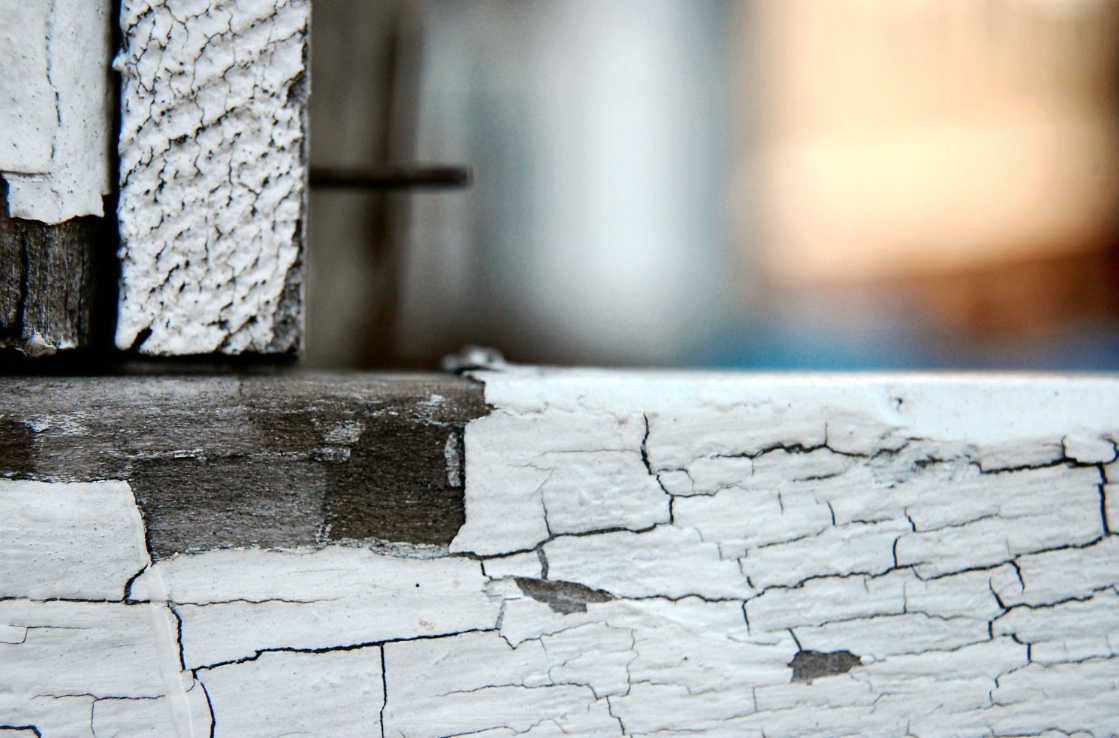As experienced designers, contractors, and owners know, most paint and coating problems are correctable, but some are especially stubborn to address. The following is a partial compendium of typical failure modes and methods for addressing the problem, as provided by paint and coatings manufacturer Benjamin Moore & Co. (www.benjaminmoore.com):
1. Surface imperfections.
There are many types of imperfections that can be visible on painted or sealed surfaces. Alligatoring occurs when the paint film takes on the appearance of alligator hide. (A similar problem is known as wrinkling, which appears as a rough creased or crinkled pattern.) Alligatoring usually occurs when a topcoat is applied before an undercoat is dry, or if an alky enamel or other hard, rigid coating is applied over a latex primer or another more flexible finish layer. Some oil-based coats will lose elasticity as they age, causing this familiar cracking pattern.
2. Blistering.
Blistering (or bubbling) is caused by a localized loss of adhesion and lifting of the paint film from the underlying surface, sometimes when solvent gas expands on sunny façades. Blistering tends to occur in fresh coats of paint.
Both problems require removing as much paint as possible and repainting. However, blistering can immediately reappear if the problem is caused by moisture; to mitigate this problem, the contractor should repair loose caulk and retrofit drainage and drying details, if possible. Installing vents or exhaust fans can also reduce moisture by evaporation before it wets enclosure materials.
For alligatoring, most paint contractors will recommend completely remove the existing oil paint by using a heat gun, scraping, and sanding. After priming the reworked surface with a high-quality latex or oil-based primer, the area can then be recoated with exterior latex or similar paint.
3. Flaking and chalking.
In some cases, a painted or coated surface will exhibit a loose powder or flaking surface. These problems are caused by decomposing paint and are different from efflorescence or mottling, which display white, crusty mineral salt deposits that have leached from mortar, concrete, or masonry surfaces behind the paint. A similar problem known as frosting is often seen on dark paints and coatings; in this case, a white discolored substance appears on the surface, similar to salt staining.
Chalking paint may be washed by rain and cause patterns, or it may wash across other surfaces, an effect called chalk rundown.
4. Miscoloring and staining.
Other sources of miscoloration on exterior and interior surfaces include nailheads and other penetrations that leach a rust-colored stain onto a surface, which often trails down from the location of the hardware. Mildew appears as black, gray, or brown spots or areas on the paint film or caulk bead.
5. Surfactant leaching.
Another source of undesired color change is surfactant leaching, in which concentrated, water-soluble ingredients in latexes seep to the paint surface, often creating a brownish blotchy or shiny appearance. Tannin staining can also be a brownish or tan discoloration on the paint surface, caused by wood tannins that leach through the paint film.
When applied properly onto suitably prepared substrates, architectural coatings will rarely exhibit these kinds of failures. Even better, when integrated into a thoughtful sustainability program, paints and coatings can be a partner in effective building designs that promote improvements to project economics and social considerations as well as protecting the environment.
Related Stories
| Apr 8, 2014
Fire resistive curtain wall helps The Kensington meet property line requirements
The majority of fire rated glazing applications occur inside a building to allow occupants to exit the building safely or provide an area of refuge during a fire. But what happens when the threat of fire comes from the outside? This was the case for The Kensington, a mixed-use residential building in Boston.
| Apr 8, 2014
Reflecting on job number 61-001
Job number 61-001 changed everything. It was sold in 1961, a year of change for the nation and for Star. By January, John F. Kennedy would be president. By the end of the year, Star would launch a historic shift in our product and our distribution, a shift still active today.
| Apr 2, 2014
8 tips for avoiding thermal bridges in window applications
Aligning thermal breaks and applying air barriers are among the top design and installation tricks recommended by building enclosure experts.
Sponsored | | Mar 25, 2014
Johns Hopkins chooses SLENDERWALL for a critical medical facility reconstruction
After decades of wear, the hand-laid brick envelope of the Johns Hopkins nine-story Nelson/Harvey inpatient facility began failing. SLENDERWALL met the requirements for renovation.
| Mar 21, 2014
Forget wood skyscrapers - Check out these stunning bamboo high-rise concepts [slideshow]
The Singapore Bamboo Skyscraper competition invited design teams to explore the possibilities of using bamboo as the dominant material in a high-rise project for the Singapore skyline.
| Mar 20, 2014
Common EIFS failures, and how to prevent them
Poor workmanship, impact damage, building movement, and incompatible or unsound substrate are among the major culprits of EIFS problems.
| Mar 20, 2014
13 dazzling wood building designs [slideshow]
From bold structural glulam designs to striking textured wall and ceiling schemes, these award-winning building projects showcase the design possibilities using wood.
| Mar 19, 2014
Federal agency gives thumbs up to tall wood buildings
USDA's support for wood projects includes training for AEC professionals and a wood high-rise design competition, to launch later this year.
| Mar 17, 2014
Rem Koolhaas explains China's plans for its 'ghost cities'
China's goal, according to Koolhaas, is to de-incentivize migration into already overcrowded cities.
| Mar 12, 2014
14 new ideas for doors and door hardware
From a high-tech classroom lockdown system to an impact-resistant wide-stile door line, BD+C editors present a collection of door and door hardware innovations.
















